Guest Post: Depilation in the 1920s, by Lucy Jane Santos
In this series of posts, I will be taking something from the Underpinnings Museum’s collection and using it to look at an object from my collection of historical beauty items. Today’s twin focuses are a stockings and garter set and an object called “The Tweaker.”
This beautiful item can be stylistically dated to the 1920s by its art nouveau packaging with cut out legs designed to show off the contents of silk stockings and eau-de-nil silk ribbon garters with silk floral ribbonwork.
And while we do not know much else about this particular gift set we do know quite a bit about stockings and garters at that time.
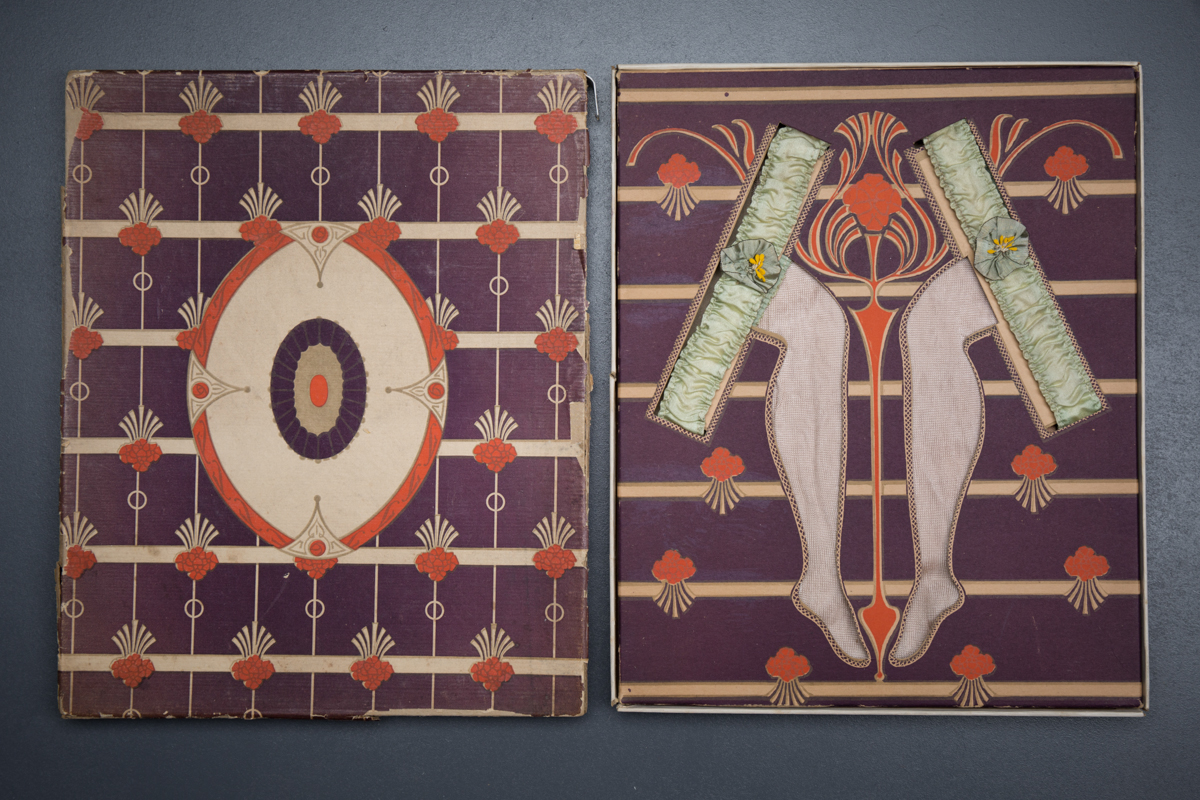
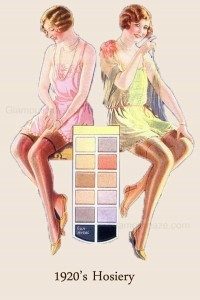
Before the 1920s stockings were typically black, made of thick materials (often cotton or wool) and were designed to provide warmth. And they were certainly not designed to be shown off.
Changes in manufacturing processes and the invention of sheer Rayon (1915) had allowed for an explosion of styles, materials, colours and patterns in the 1920s.
And this mattered because changes in the fashionable length of hemlines meant there was a new focus on legs. It became fashionable to wear a variety of different colours stockings, show off your garters, or even roll your stockings down.
This expansion of flesh on show, or apparent flesh, brings us to leg hair and The Tweaker as the 1920s also saw a focus on the importance of hair removal for women.
While the desirability of bodily hair removal depends on the historical period, and the class, gender, race and place of who we are talking about it is fair to say that for the majority American and British women at the turn of the twentieth century removing body hair was not a high priority.
By 1915 companies such as X-Bazin (manufacturers of depilatory powders since the mid-nineteenth century) and Gillette (a relatively new manufacturer of safety razors who had introduced the Milady Decolleté targeted specifically at women that year) had bodily hair firmly in their sights. Adverts placed in high-class magazines such as Vogue and Harpers’ Bazaar introduced upper-class wealthy women to the vital importance of removing their underarm hair which had been exposed by new styles of sleeveless and sheer summer dresses.
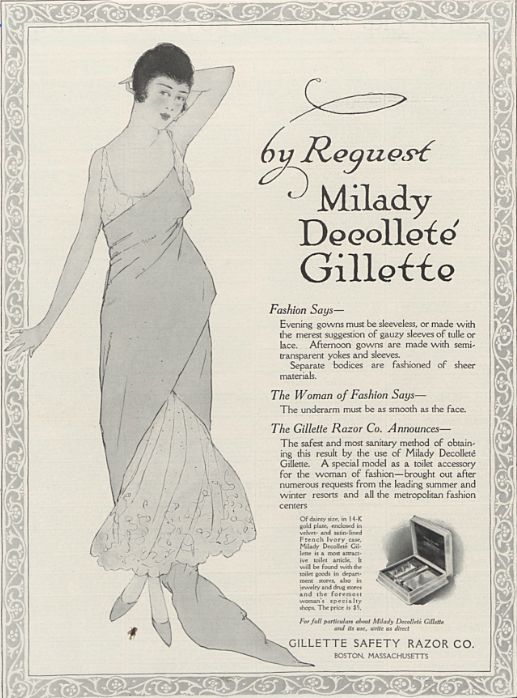
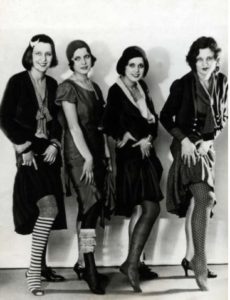
By the late teens hemlines were higher and the popularity of sports and bathing had also increased. Hair removal companies now turned their attention to leg hair which joined the ever-growing list of unacceptable bodily attributes in women.
The idea was simple. If you were a modern women, then you needed to ensure that any undesirable hair was removed or face social and personal embarrassment. Companies such as Zip, Neet, LaLeek, El Rado, Delatone and Re-Mo-Vo also championed a range of techniques to remove the hair which included depilatory powders, razors and, in the case of the Tricho Institute, X-ray hair removal.
But whereas underarm hair removal seems to have been an easy sell, there was not the corresponding almost universal enthusiasm for leg hair removal. Advertisers had to work harder to get the same level of uptake, and it wasn’t until the 1960s that the majority of women, or at least those under 44, in America and Britain were removing their hair systematically.
There have been a variety of suggestions as to why this was, but one of the most persuasive relates to stockings.
Stockings allowed women the illusion of hair free legs without going to all the trouble and expense of actually removing it. Or as one beauty book from the mid-1920s put it stockings serve to “effectively conceal unsightly hairs.”

It is clear that the advertisers also believed that stockings were the root of at least some of the resistance to leg hair removal as many took valuable copy space in explaining why stockings were not as good as their product.
The fact that hair removal products were also difficult to use also had an impact– the Milady Decolleté was tiny, quite expensive and a faff to use. Depilatory powders required you to measure the powder out, mix with water to form a paste and then apply. Liquid depilatories were runny and difficult to use. And as for X-ray hair removal do check out the excellent post on Cosmetics and Skin for why that wasn’t a particularly good idea.
Focusing on the incompatibility of sports and stockings their 1923 ad argued that “women who love to swim find stockings a great hindrance to their enjoyment.”
Others such as Neet and Zip showed women partaking in sunbathing, swimming, dancing and sports exposing their hair free thighs, shins and arms in an attractive, relaxed way.
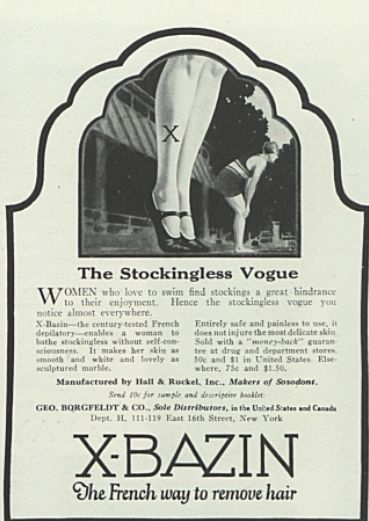
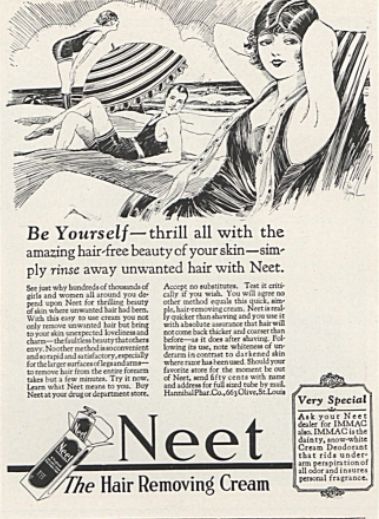
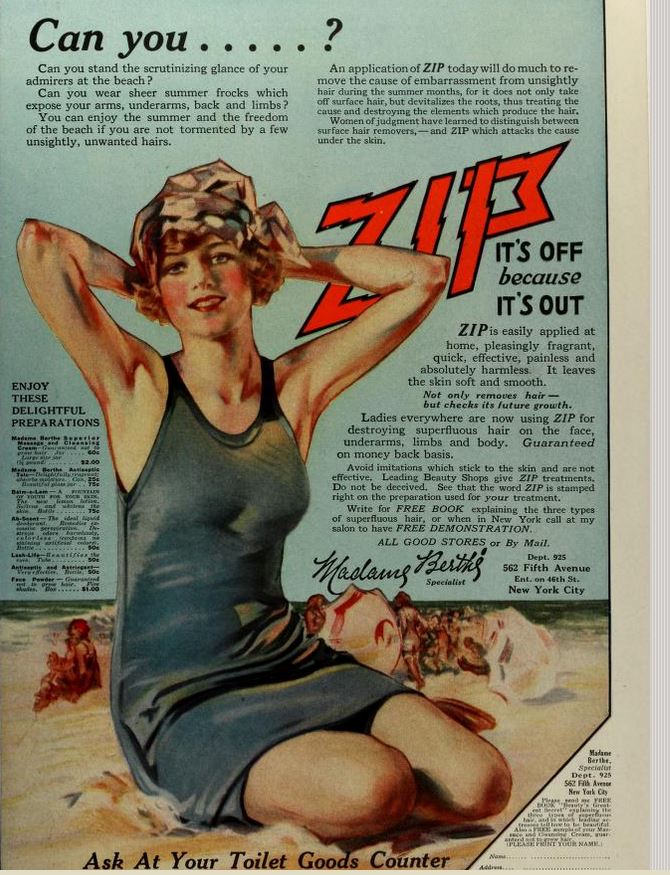
But by far my favourite historical object for hair removal is The Tweaker. Patented in 1926, and introduced for sale in 1927 by the Tweaker Manufacturing Company of Chicago they went further than others by stating the importance of hair free legs even when wearing stockings.
‘Your daintiness demands arms and legs free from unsightly hairs. When you mingle with the happy summer throng at the beaches….. whenever you “go formal”… every time you wear a pair of gossamer chiffon hose.. you are conscious of the importance of taking every precaution against embarrassment. Your happiness, your peace of mind depends so much on this one thing.’
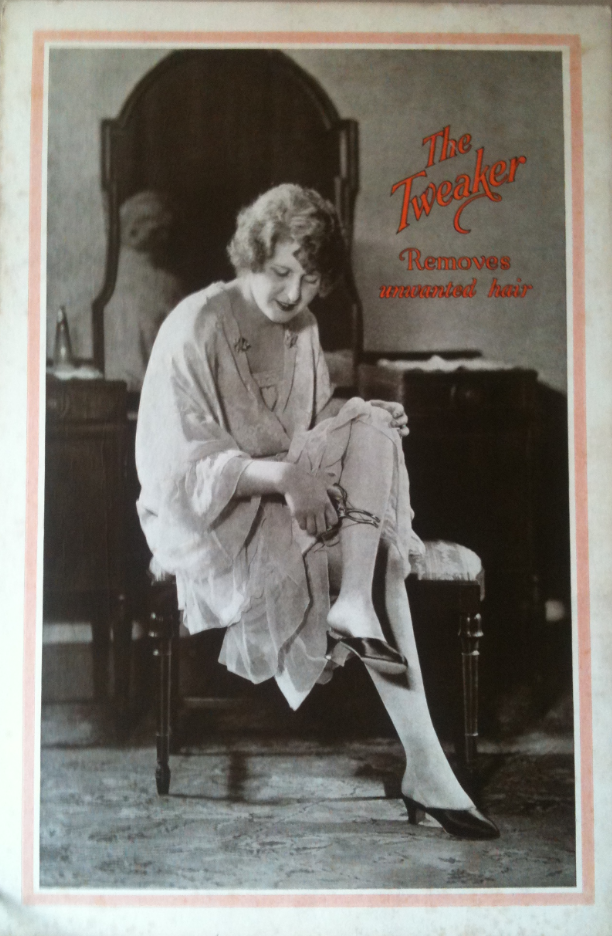
The Tweaker itself comes in a blue, plain, box with an envelope of size No. 8 rubber bands which stretched across between the front and rear posts on each side of the device.
“Take hold of Tweaker with your thumb and forefinger, as you would a pair of scissors. Open and close it a few times quickly.”
Despite looking like a weapon of torture, this “pleasing method” promised a new freedom for women that could be up kept in just a minute or two each day.
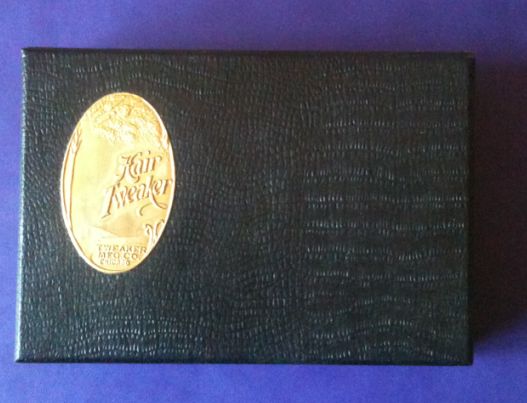
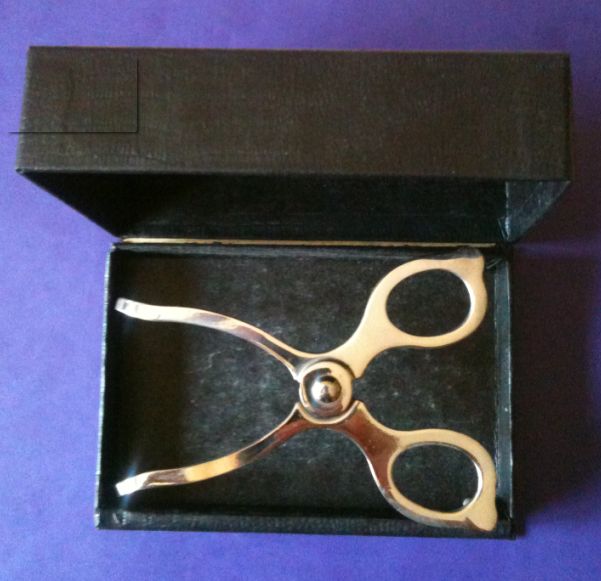
The accompanying How-To booklet promises that the hairs are gently rolled out by the roots and use “absolutely discourages the return of hair”.
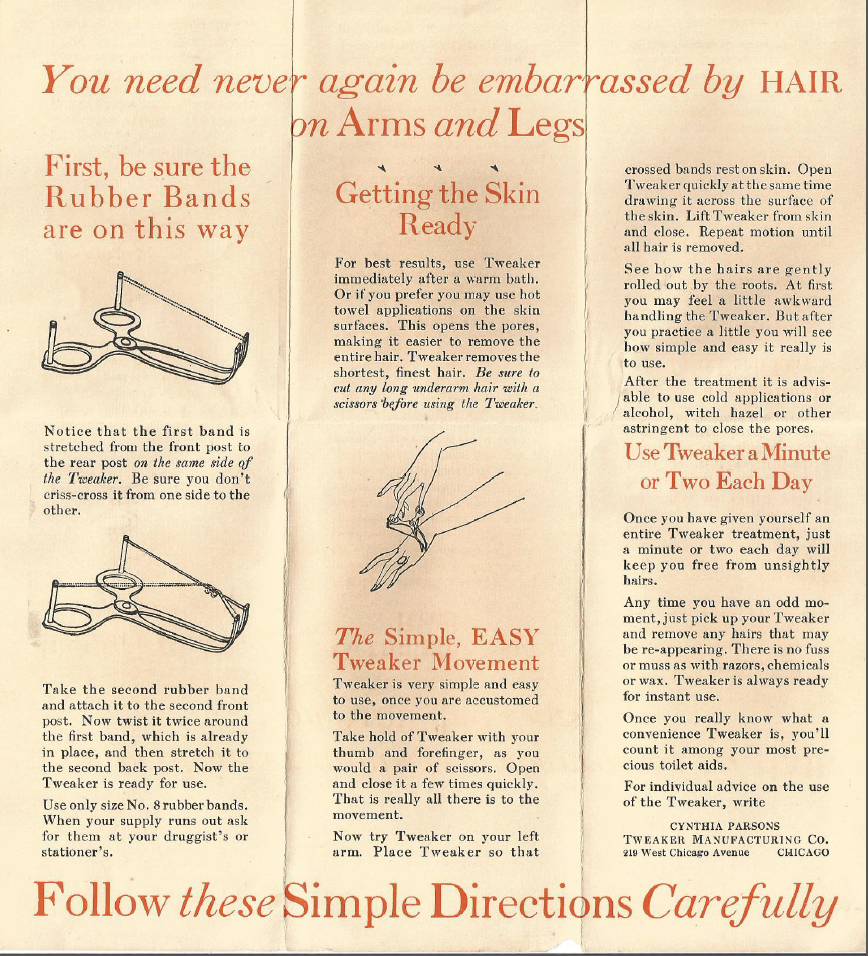
Amongst all the razors, depilatory powders, waxes and creams on sale in the 20s the Tweaker seems to be fairly unique, and it is a real pleasure to have this in my collection.
But despite its attractiveness as an object it also does an excellent job of showing how embracing stockings, even when bathing, could be seen as a good alternative to leg hair removal.
